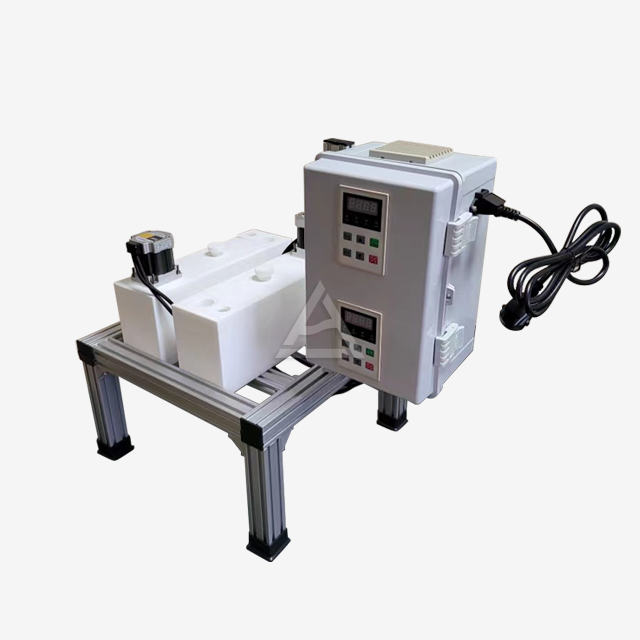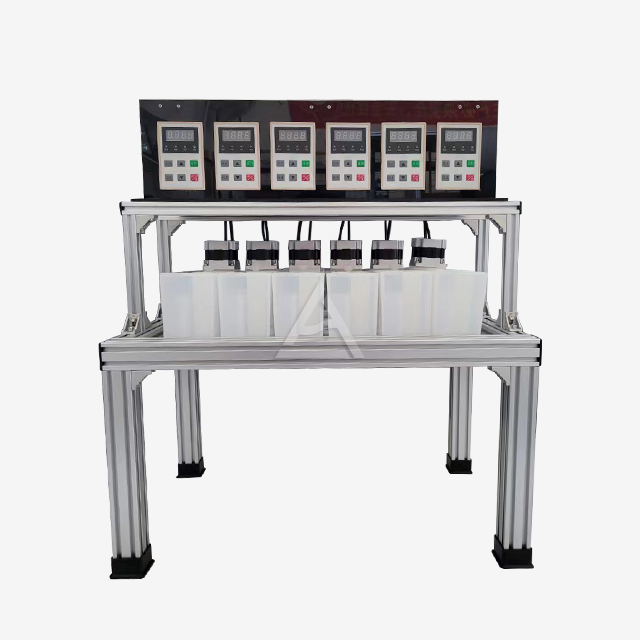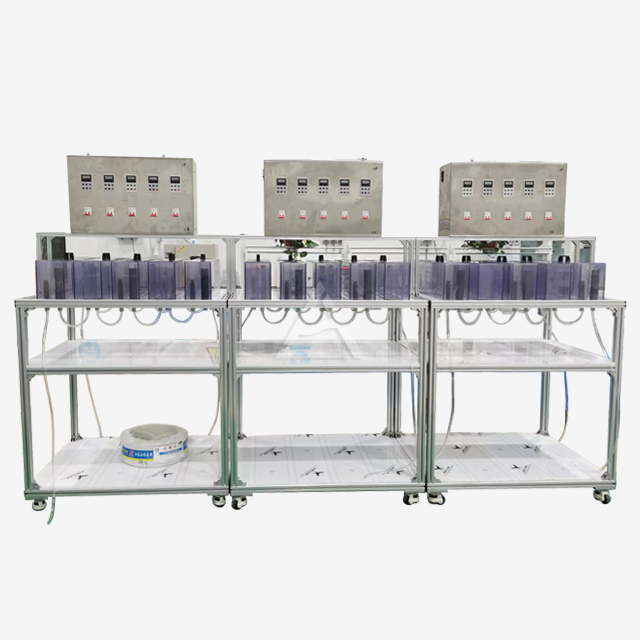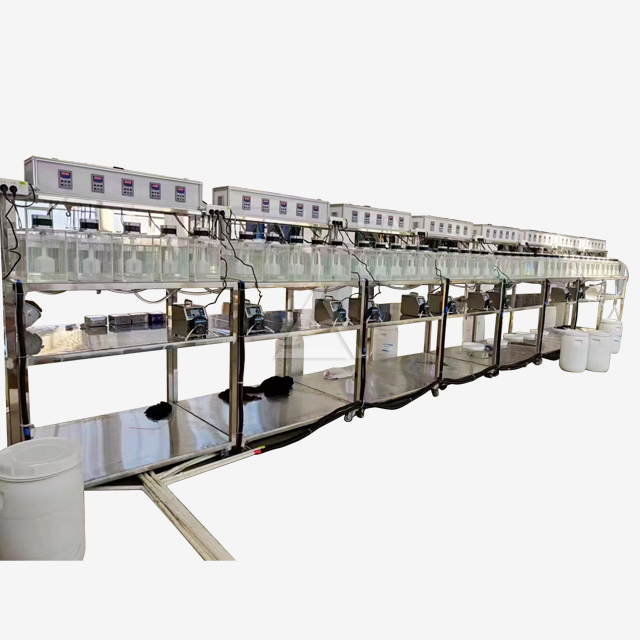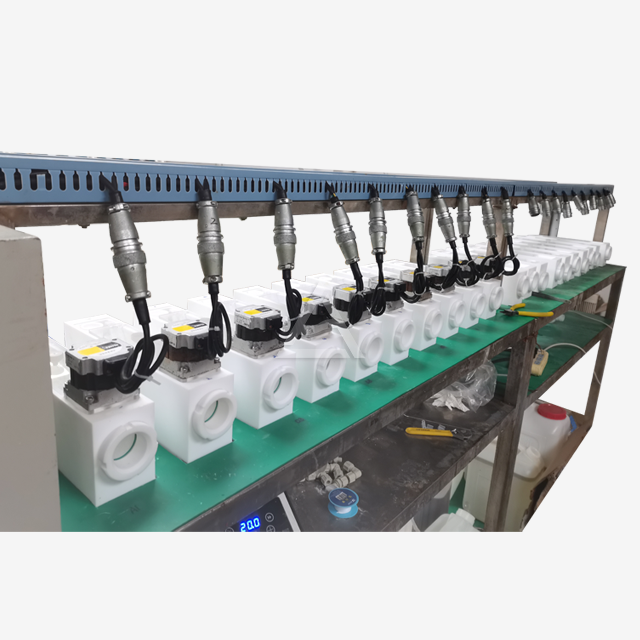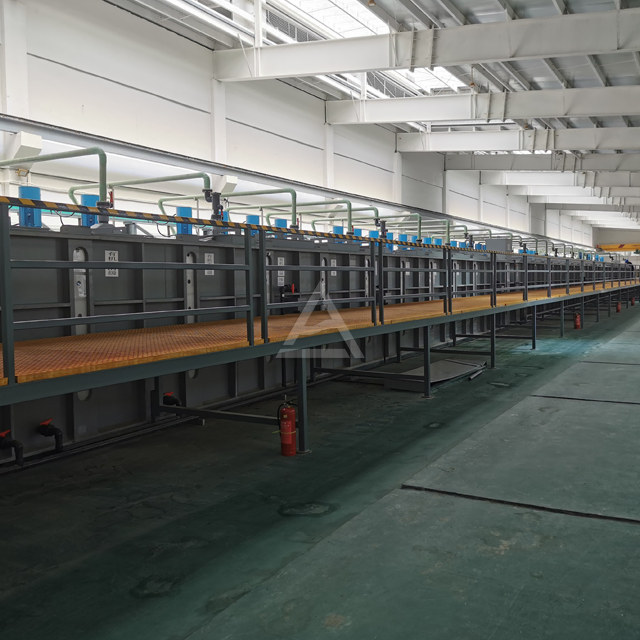The Fundamental Principles of Mixer Settler Operations
Mixing Stage: Creating Optimal Conditions for Mass Transfer
The mixing stage is the heart of the mixer settler mechanism. In this phase, two immiscible liquids – typically an aqueous solution and an organic solvent – are brought into intimate contact. The mixer, often equipped with impellers or baffles, creates turbulence that breaks the liquids into tiny droplets, dramatically increasing the surface area for mass transfer.
This increased surface area is crucial for efficient extraction. As the droplets disperse throughout the mixture, the target compounds can more readily move from one phase to the other. The intensity and duration of mixing are carefully controlled to balance thoroughness with energy efficiency. Too little mixing results in poor extraction, while excessive mixing can lead to the formation of stable emulsions that are difficult to separate.
Advanced mixer settler designs incorporate features like variable-speed agitators and flow-optimized impeller geometries. These enhancements allow for fine-tuning of the mixing process to suit specific extraction requirements, ensuring optimal mass transfer for a wide range of applications.
Settling Stage: Gravity-Driven Phase Separation
Following the intensive mixing, the combined liquids flow into the settler compartment. Here, the mechanism shifts from dynamic agitation to quiescent conditions that allow gravity to take over. The settler is designed to provide sufficient residence time for the dispersed droplets to coalesce and form distinct layers based on their densities.
The settling process is aided by carefully designed internal structures such as baffles and weirs. These components help to minimize turbulence and create ideal flow patterns that promote rapid and clean separation. The heavier phase, typically the aqueous solution, settles to the bottom, while the lighter organic phase rises to the top.
The efficiency of the settling stage is critical to the overall performance of the mixer settler. Incomplete separation can lead to carryover of one phase into the other, reducing the purity of the extracted compound and potentially causing issues in downstream processes. To address this, some advanced settler designs incorporate coalescence-enhancing materials or electrostatic coalescers to accelerate the separation process.
Continuous Operation and Multi-Stage Configurations
One of the key advantages of mixer settler technology is its ability to operate continuously. As separated phases exit the settler, fresh feed enters the mixer, allowing for uninterrupted processing. This continuous operation is particularly valuable in large-scale industrial applications where downtime can be costly.
For more complex separations or to achieve higher purity levels, mixer settlers can be arranged in series to form multi-stage extraction systems. Each stage incrementally improves the separation, with the aqueous and organic phases flowing countercurrent to each other. This configuration maximizes the concentration gradient between the phases, driving more efficient mass transfer.
The flexibility to adjust the number of stages and the operating parameters of each unit allows process engineers to optimize the extraction process for specific applications. This adaptability makes mixer settler technology suitable for a wide range of industries, from rare earth element purification to pharmaceutical manufacturing.

Key Design Considerations for Efficient Mixer Settler Systems
Material Selection: Balancing Corrosion Resistance and Transparency
The choice of materials for mixer settler construction is crucial to ensure both longevity and efficiency. Corrosion-resistant materials like stainless steel (e.g., SUS316L) or specialized polymers such as PTFE are often used for components that come into contact with aggressive chemicals. These materials can withstand a wide pH range (1-14) and resist degradation from organic solvents.
In some applications, transparency is desirable for monitoring the mixing and settling processes. Materials like PMMA (acrylic) or transparent PVC allow for visual inspection of phase boundaries and mixing dynamics. This can be particularly useful during process optimization or troubleshooting.
The selection of gasket and seal materials is equally important to prevent leaks and maintain system integrity. PTFE and other fluoropolymers are commonly used due to their chemical inertness and excellent sealing properties. For applications involving high temperatures or particularly aggressive chemicals, more specialized materials like PEEK may be necessary.
Hydrodynamic Optimization: Enhancing Flow Patterns and Separation Efficiency
The internal geometry of mixer settler units plays a significant role in their performance. In the mixing chamber, the design of impellers and baffles affects the energy input and mixing patterns. Computational fluid dynamics (CFD) simulations are often employed to optimize these components, ensuring uniform dispersion while minimizing power consumption.
In the settler, the focus shifts to promoting laminar flow and clean phase separation. The inlet design from the mixer to the settler is critical in dissipating kinetic energy and preventing remixing. Perforated plates or specially designed distributors are used to spread the incoming mixture evenly across the settler's cross-section.
The settler itself may incorporate a series of inclined plates or packing material to enhance coalescence and reduce the required settling time. These internals increase the effective settling area without significantly increasing the overall footprint of the unit. Some advanced designs use electrostatic fields to promote droplet coalescence, further improving separation efficiency.
Instrumentation and Control: Ensuring Optimal Performance and Adaptability
Modern mixer settler systems are equipped with a range of sensors and control systems to maintain optimal performance under varying conditions. Interface level sensors are used to monitor and adjust the position of the phase boundary in the settler. This is crucial for preventing entrainment of one phase into the other and maintaining extraction efficiency.
Flow meters and control valves regulate the feed rates of both phases, ensuring the correct ratio is maintained for effective extraction. In multi-stage systems, these controls can be used to implement advanced operating strategies like split-flow configurations or variable stage efficiency.
Temperature control is often critical, especially in applications where the distribution coefficient of the target compound is temperature-sensitive. Heating or cooling jackets may be incorporated into the mixer settler design, with precise temperature control managed by a PLC system.
For processes requiring pH control, inline pH sensors and dosing pumps can be integrated to maintain optimal conditions for extraction. This is particularly important in hydrometallurgical applications where pH can significantly affect the selectivity of the extraction process.

Advanced Applications and Future Trends in Mixer Settler Technology
Rare Earth Element Extraction: Meeting the Demands of High-Tech Industries
The extraction and purification of rare earth elements (REEs) have become increasingly important due to their critical role in modern technologies. Mixer settler systems are at the forefront of this industry, offering efficient separation of individual REEs from complex ore concentrates.
In REE processing, mixer settlers are often arranged in long cascades to achieve the high purity levels required for applications in electronics, renewable energy technologies, and advanced materials. The ability to fine-tune extraction conditions at each stage allows for the separation of elements with very similar chemical properties, such as neodymium and praseodymium.
Recent advancements in mixer settler design for REE extraction include the use of novel extractants that offer higher selectivity and faster kinetics. These improvements, combined with optimized hydrodynamics, have led to significant increases in throughput and reductions in solvent consumption, addressing both economic and environmental concerns in REE production.
Nuclear Fuel Reprocessing: Enhancing Safety and Efficiency
In the nuclear industry, mixer settler technology plays a crucial role in the reprocessing of spent nuclear fuel. The PUREX (Plutonium Uranium Redox EXtraction) process, which separates uranium and plutonium from fission products, relies heavily on mixer settler systems.
The design of mixer settlers for nuclear applications emphasizes safety and containment. Radiation-resistant materials and robust sealing systems are employed to prevent leaks and contamination. Remote operation and maintenance capabilities are often integrated to minimize personnel exposure to radioactive materials.
Recent developments in this field include the exploration of centrifugal contactors as an alternative to traditional gravity-based settlers. These devices offer faster separation and smaller footprints, potentially improving the efficiency and reducing the environmental impact of nuclear fuel reprocessing.
Emerging Trends: Miniaturization and Process Intensification
The trend towards process intensification has led to the development of micro and milli-scale mixer settler devices. These miniaturized systems offer several advantages, including improved mass transfer rates, reduced solvent inventories, and enhanced safety for handling hazardous materials.
Microfluidic mixer settlers, fabricated using advanced manufacturing techniques like 3D printing, allow for precise control of interfacial areas and residence times. This level of control enables rapid optimization of extraction conditions, making them particularly useful in pharmaceutical and fine chemical industries where product purity and process efficiency are paramount.
Another emerging trend is the integration of mixer settler technology with other separation techniques. For example, hybrid systems combining liquid-liquid extraction with membrane separation or electrochemical processes are being developed. These integrated approaches aim to overcome limitations of individual technologies and offer more versatile and efficient separation solutions.

Conclusion
Mixer settler technology remains a cornerstone of liquid-liquid extraction processes across various industries. Its fundamental principles of efficient mixing and controlled separation continue to be refined through advances in materials science, fluid dynamics, and process control. As industries face increasing demands for purity, efficiency, and sustainability, mixer settler systems are evolving to meet these challenges. From large-scale hydrometallurgical operations to miniaturized devices for pharmaceutical research, the versatility and effectiveness of mixer settlers ensure their continued relevance in separation technology.
Contact Us
Ready to optimize your extraction processes? Cuiyan Technology offers cutting-edge mixer settler solutions tailored to your specific needs. Our advanced designs ensure high extraction rates, perfect separation, and energy-efficient operation. Contact us at wangzhijun@cuiyan-tec.com to discover how our expertise can enhance your industrial processes and drive your business forward.




